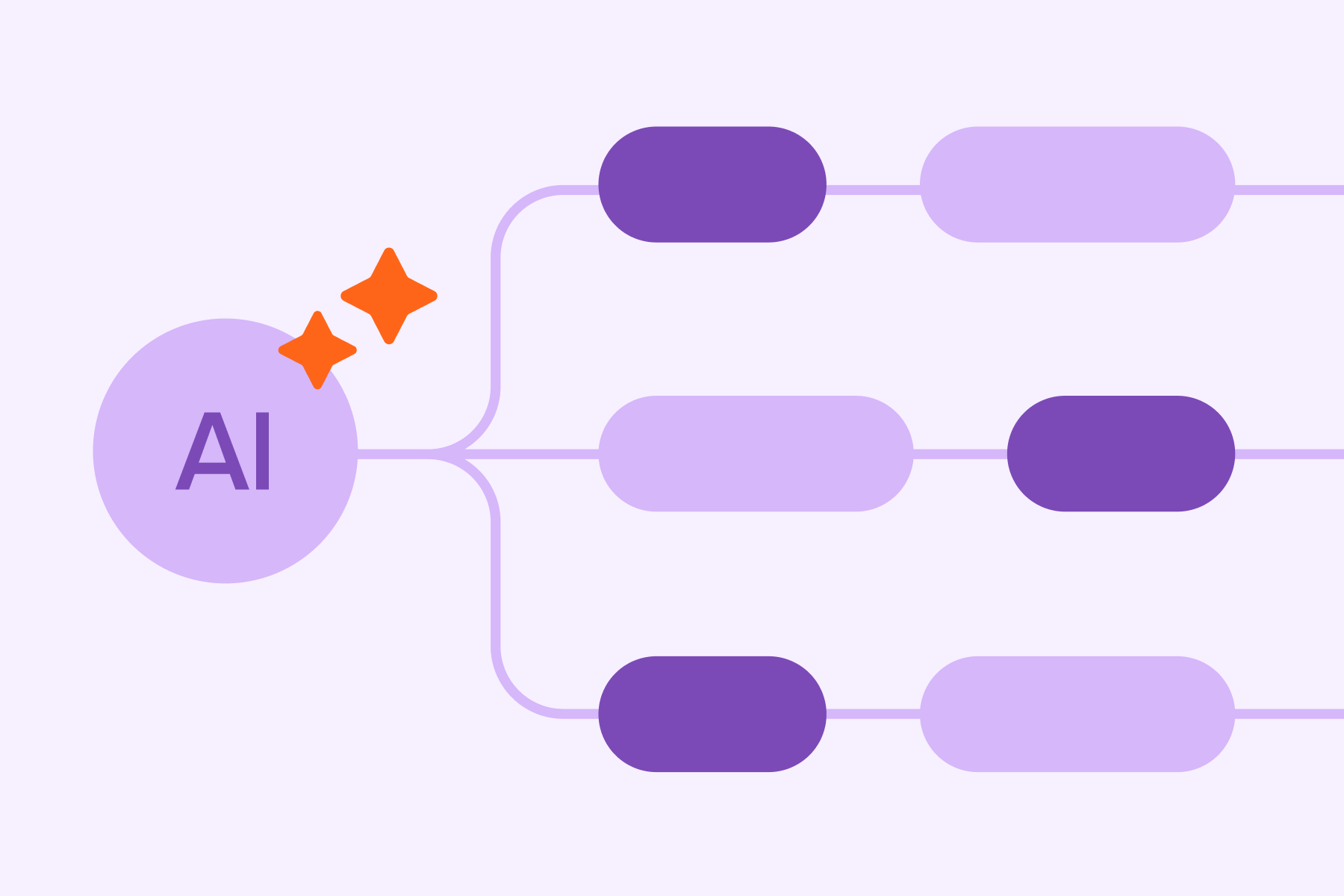B2B SaaS Lead Generation Strategies: 15 Proven Tactics That Drive SQLs
Anastasiya Khvin
October 22, 2025

We've managed paid campaigns for companies like Mixpanel, ShipBob, and dozens of other SaaS brands. Seen the wins, the disasters, those "wait, you spent that much on LinkedIn ads?" moments.
Watched startups torch their Series A on lead gen tactics that looked wonderful on paper but delivered zero real results. We've also helped mature SaaS companies 4X their pipeline value by throwing out the playbook.
The B2B lead generation game has changed. What crushed it in 2022 feels ancient now. Your buyers got smarter, more skeptical. Some SaaS companies are killing it right now though. Their pipelines stay full while competitors argue about budget in endless Slack threads.
Here are 15 B2B lead generation strategies that actually work in 2025, just what we've tested and watched deliver real SQLs.
Why Traditional B2B Lead Generation Strategies Fall Short for SaaS Companies in 2025
Remember the "Download our whitepaper!" era?
Those days are dead.
The traditional B2B playbook was written for companies selling physical products. Nobody was thinking about software. SaaS has this unique problem: your buyers want to experience your product before they'll talk to sales. They don't want a form standing between them and understanding what your software does.
We've crunched the numbers. Forms with more than 4 fields cause conversion rates to fall off a cliff. Gated content that doesn't show immediate value loses 60-70% of potential leads.
The old lead gen model assumes all B2B leads are basically the same. But a startup founder downloading your pricing guide is fundamentally different from an enterprise VP doing solution research. Traditional strategies treat them identically. That's expensive.
The Foundation: Understanding the B2B SaaS Lead Gen Funnel
Most agencies mess this up completely.
The Buyer's Journey for Software Lead Generation
Your typical B2B buyer isn't following some neat funnel anymore. They're researching while half-listening to Zoom meetings, checking review sites, asking in Slack communities. They might visit your website on the third or fourth touchpoint.
For SaaS, prospects engage with 7-9 touchpoints before they're ready to talk to sales. What really messes with traditional lead generation? They might sign up for your free trial before giving you their company email, or download content using personal Gmail, then come back weeks later through a LinkedIn ad.
The lead generation process is messy, non-linear. Your job isn't forcing people through your funnel; it's being present at every stage of their research.
Qualifying Leads: MQLs vs. SQLs in the SaaS Context
MQLs are basically worthless for most SaaS companies.
We've watched marketing teams celebrate hitting MQL targets while sales drowns in garbage leads. Someone downloading an ebook doesn't make them marketing-qualified.
In our work with SaaS clients, we obsess over SQL generation: sales-qualified leads with budget, authority, need, and timeline to buy. When we started with Mixpanel, they were generating impressive MQL volumes but sales struggled to convert. We rebuilt their qualification process focusing on behavioral signals and company fit. Within months, fewer "leads" on paper but way more SQLs that closed.
.webp)
Qualification needs to happen before you hand leads to sales. We build lead scoring models based on demographic data and behavioral signals. A freemium user who invites their whole team and hits usage limits? That's an SQL waiting to happen.
15 Lead Generation Strategies That Actually Drive SQLs
1. Strategic Gated Assets That Generate B2B Leads
Only gate content valuable enough that someone would trade contact information for it. Original research, detailed implementation guides, ROI calculators using actual data, comparison guides.
For one client, we created an interactive pricing calculator. 34% conversion rate. The lead quality? Through the roof. People who took time to calculate costs were serious prospects.
2. Bottom-of-Funnel Content That Drives Lead Conversion
Most SaaS companies pour resources into awareness content, then leave prospects hanging when they're ready to decide.
Bottom-funnel content needs to answer hard questions: "How does this integrate?" "What does implementation look like?" "What's the real ROI?"
.webp)
We helped a client create detailed implementation guides, actual technical documentation their prospects could take to their engineering teams. These drove more SQLs than any whitepaper because they helped de-risk the buying decision. LinkedIn research confirms that 71% of B2B buyers say content marketing helps them make better purchasing decisions.
3. SEO-Driven Lead Generation for SaaS Companies
SEO for SaaS is playing the long game. Once working? It's one of the highest-ROI lead generation channels you can build.
Target keywords showing buyer intent. Someone searching "best project managment software for agencies" is way more valuable than "what is project management."
Focus on comparison pages, alternative pages, and solution-specific pages. Search engine optimization generates inbound leads on autopilot once you rank.
4. Organic LinkedIn Strategies That Qualify Leads Automatically
If you're in B2B SaaS and not crushing LinkedIn, you're leaving money on the table.
Organic LinkedIn requires consistency, but lead quality is incredible. These leads raise their hands to you.
Your founders and executives need to create content: real insights from the trenches, behind-the-scenes stories, hot takes, lessons learned. Not polished corporate posts.
We've seen SaaS founders generate more SQLs from a single authentic LinkedIn post than from months of traditional outbound.
5. LinkedIn Ads and Campaign Optimization for High-Quality Leads
LinkedIn ads are expensive; CPCs can be brutal. But for B2B SaaS targeting specific personas, often worth every penny.
When we manage LinkedIn campaigns, we're not targeting generic "marketing managers." We're targeting "VP of Marketing at Series B SaaS companies in North America with 51-200 employees."
Lead with value. Give something useful upfront. LinkedIn's Matched Audiences lets you retarget website visitors. Campaigns targeting companies that visited your pricing page but didn't convert get 3-4X higher conversion rates. If you want to improve your LinkedIn performance, check out our LinkedIn ads optimization checklist. The LinkedIn Marketing Blog regularly shares insights on what's working for B2B marketers in 2025.
6. Free Trial Strategies That Accelerate the Lead Generation Process
When done right, your product becomes your best lead generation tool. According to Gartner research, by 2025, 75% of SaaS providers will apply product-led growth techniques to drive customer growth and expansion.
Most companies treat free trials as courtesy, not strategic lead gen funnel. That's a mistake.
Create "aha moments" where users suddenly get your value. The faster, the higher your trial-to-paid conversion.
We worked with a SaaS company getting tons of signups but terrible conversion. Most people got stuck during setup. They rebuilt onboarding to get users to value in under 5 minutes.Trial conversion jumped 89%.
Use product usage data to score and qualify leads automatically. Power users hitting milestones? Push to sales.
7. Interactive Demos and Product Tours as Lead Magnets
Interactive demos not requiring signup are becoming secret weapons. Let prospects explore with zero commitment; they self-qualify. People spending 15 minutes with your demo are high-quality leads.
8. Multi-Channel Outbound Campaigns
Cold outreach works. But spray-and-pray email? That's dead.
Effective outbound in 2025 coordinates touches across email, LinkedIn, phone, even direct mail. Orchestrated, not random.
Start with research. Actually understand your prospect's business, challenges, tech stack. Not scalable to thousands; that's the point.
Sequences starting with value, building credibility, then making soft asks outperform "pitch every message" by huge margins.
9. Account-Based Marketing for High-Value B2B Sales Leads
For SaaS targeting enterprise, ABM isn't optional.
When we helped Orion Labs scale paid acquisition with targeted ABM for highest-value prospects, sales opportunities increased 60% in 6 months, growing to 4X overall.
ABM campaigns include personalized landing pages, custom content, coordinated campaigns targeting specific companies. Intensive, but ROI on one enterprise deal typically justifies everything. Salesforce research shows that 84% of businesses implementing ABM strategies report an increase in ROI.
10. Community-Led Lead Generation Tactics for SaaS Companies
Building community around your product creates a flywheel; members help each other, create content, become advocates. It compounds.
Make it valuable regardless of product use. Notion built massive community sharing templates and use cases, generating brand awareness and qualified leads already product-educated.
Start small. Virtual events, must-read newsletter, podcast. Build audience first.
11. Referral Programs That Generate Quality Leads
Referral programs work because of built-in trust. When someone respected recommends a tool, you listen.
Keep simple: clear reason to refer, easy sharing, quick follow-up. We've seen referral programs generate leads with 4-5X higher conversion rates.
12. Integration Partnerships as a Lead Generation Funnel
Build integrations with complementary tools customers use, then co-market. Listed in partner's integration directory puts you in front of their entire user base.
Integration partnership leads are further along, actively looking for solutions fitting their stack.
13. Google Ads and Paid Search for Software Lead Generation
Google Ads for B2B SaaS has lower volumes, higher CPCs, longer cycles but leads can be phenomenal. Our paid search services cover both Google and Microsoft Bing Ads to maximize your reach.
When we manage paid search campaigns, we target searches indicating active evaluation. Competitor names, comparison searches, solution-specific searches, integration searches.
Lower volume, but people are ready to buy. Campaigns focused on bottom-funnel keywords deliver CPLs 50-60% lower while generating 3X more SQLs.
For Originality.AI, we rebuilt their Google Ads strategy focusing on high-intent keywords. Google Ads sales increased 100%. Same budget, different approach. Want to optimize your campaigns? Grab our free Google Ads optimization checklist.
Landing pages must match search intent perfectly. Someone searching specific integration lands on that integration page. This improves conversion rates and Quality Scores, lowering costs.
14. Conversion Rate Optimization: Turning Traffic into B2B Leads
Marketing rarely fails because of low traffic. The real leak is deeper in the funnel.
We've increased opportunities 4X not by driving more traffic but by optimizing what clients already got. That's the power of conversion rate optimization.
Your landing page has one job: convert visitors to leads. Clear headlines communicating value. Remove navigation. Strategic social proof near CTA. Single prominent CTA.
When we work on landing page design, we A/B test relentlessly. For one client, adding "No credit card required" under free trial CTA increased conversions 18%.
For ShipBob, we optimized campaigns and saw increases in lead volume, lead quality, and conversion rate across top campaign groups.
Lead forms kill potential leads. Ask minimum information needed now. Every field added drops conversion exponentially. Early-stage leads: email only or email plus company name. Bottom-funnel: company size, role, use case. Info helping sales.
Good microcopy explaining why you're asking builds trust, improves completion.
15. Lead Scoring and Lead Nurturing: Maximizing ROI from Lead Generation Efforts
Lead scoring separates SQLs from noise so sales focuses on opportunities most likely closing.
Build models with two dimensions: fit (match ICP?) and intent (showing buying signals?). VP at company in your sweet spot plus visiting pricing page three times? That's an SQL.
.webp)
Regularly audit models against closed-won data. Even best campaigns can't save broken analytics setup; you need proper analytics and tracking to know what's working.
Most leads aren't ready today. Winners have nurturing systems keeping leads warm.
Multi-channel nurturing (email plus LinkedIn plus retargeting) is most effective. Segment based on journey stage. We dive deeper into this in our guide on PPC lead generation for SaaS.
Well-executed nurture recovers 20-30% of cold leads. That's pipeline you already paid to generate.
Measuring Success: KPIs That Matter for Successful Lead Generation
"We generated 5,000 MQLs!" Cool, how many became customers? What's revenue impact?
Beyond Volume: Lead Quality and Lead Conversion Metrics
Metrics we track:
- SQL volume and velocity
- Lead-to-SQL conversion rate
- SQL-to-customer conversion rate
- Cost per SQL
- Customer Acquisition Cost (CAC)
- Pipeline value generated
- CAC payback period.
.webp)
These tell if your B2B lead generation strategies work or just create activity looking like progress.
When Uppbeat came to us as young startup, we built data-driven measurement from day one. They went from not knowing what worked to crystal-clear visibilty. Now they're well-known with data proving what got them there. See more results in our case studies.
What Actually Matters
B2B lead generation in 2025 isn't about doing one thing perfectly. It's orchestrating multiple channels into a system consistently filling your pipeline with qualified leads.
These tactics aren't theoretical. We've used them to help Mixpanel optimize paid acquisition, increase Originality.AI's conversion rate 210%, help Orion Labs grow sales opportunity value 4X.
What works depends on your ICP, sales cycle, product, growth journey. PLG makes sense for some, not others. ABM works brilliantly for enterprise but might be overkill for $49/month tools.
Test, measure, iterate based on what drives SQLs and revenue. Start with 2-3 channels where you can build real expertise.
Feeling like your ad budget is silently leaking? Maybe it's time for a comprehensive PPC audit to identify where your campaigns are hemorrhaging money. At Aimers, we build data-driven lead generation systems for SaaS companies. We track, analyze, and refine until we hit your targets.
Want to talk about building a lead generation strategy that actually works for your SaaS company? We've done this for dozens of B2B SaaS brands, from early-stage startups to established players. Get in touch with our team, and let's figure out which of these tactics will move the needle for your specific situation. No generic advice, just what we've seen work in the trenches.










